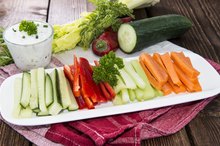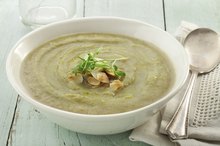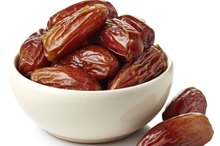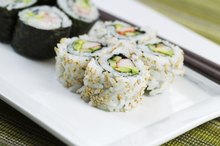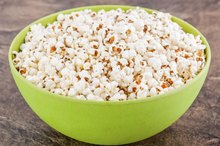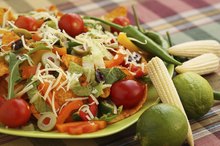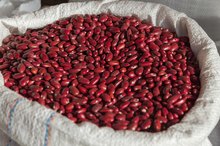List of Low Density Foods
Experts from the Mayo Clinic and the Centers for Disease Control and Prevention (CDC) agree that energy density drives weight loss. Foods with a low energy density contain a small number of calories relative to their size, allowing you to eat more without gaining weight. This helps you feel full longer, preventing overeating. High energy density foods, including desserts, candies and chips contain large amounts of calories in small servings.
Fruits and Vegetables
According to the CDC, low energy density foods tend to be those that are high in fiber, low in fat and high in water content. Most fruits and vegetables win on all three counts. According to University of Alabama-Birmingham registered dietitian Kathy Hubbert, a large apple, a half cup of blueberries and a large slice of watermelon--all low energy density items--contain 190 calories. Compare this to a paltry offering of high energy density foods--a small order of fries and a 16 oz. soft drink at 360 calories total. Along similar lines, the Mayo Clinic notes that a teaspoon of butter contains almost the same amount of calories as two cups of raw broccoli. The choice for weight loss and satiety is clear.
Broth-Based Soups
How Many Calories in Carrot Sticks?
Learn More
The CDC and Mayo Clinic both advise starting meals with salad and a broth-based vegetable soup. Broth-based soups are a sound low energy density choice, proven to impact weight loss. The CDC reviewed several studies that assessed the efficacy of low energy density foods' effect on weight loss. In one study, overweight and obese men and women were given varying amounts of broth-based soup and high energy density dry snacks as part of their diet. After one year, participants who had two servings of broth-based soups daily lost 50 percent more weight than those who ate two helpings of the high energy density snack.
Whole Grains
The Mayo Clinic recommends getting your carbohydrates from a low-energy density source--whole grain foods. The best choices are whole wheat bread, oatmeal, whole wheat pasta, brown rice and whole grain cereals. Whole grains are smart choices because they are high in fiber. In addition to being a common characteristic of low energy density foods, fiber also aids digestion and brings other potential health benefits. The CDC reviewed several studies to determine the effectiveness of fiber on weight loss. In 20 of the 22 studies they assessed, a diet high in fiber prompted greater weight loss than one low in fiber.
Related Articles
References
Writer Bio
As a writer since 2002, Rocco Pendola has published numerous academic and popular articles in addition to working as a freelance grant writer and researcher. His work has appeared on SFGate and Planetizen and in the journals "Environment & Behavior" and "Health and Place." Pendola has a Bachelor of Arts in urban studies from San Francisco State University.
